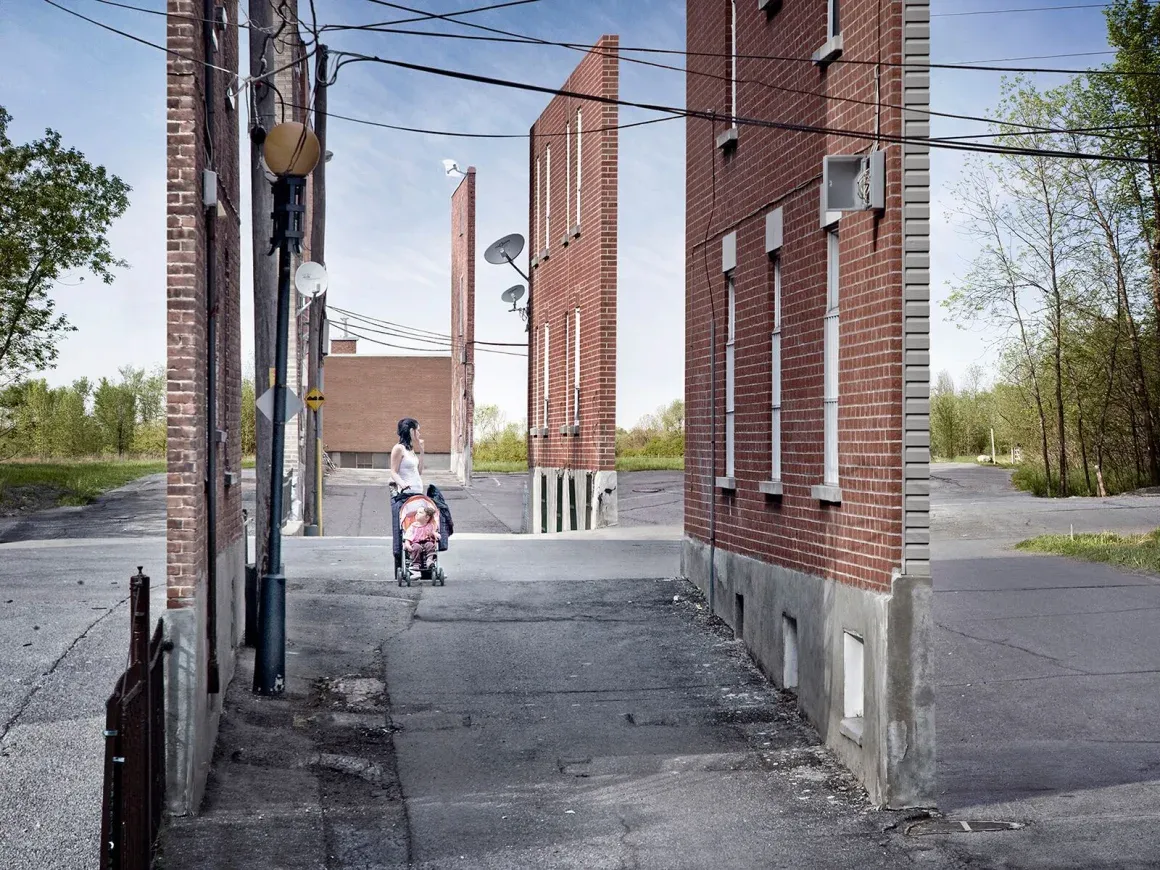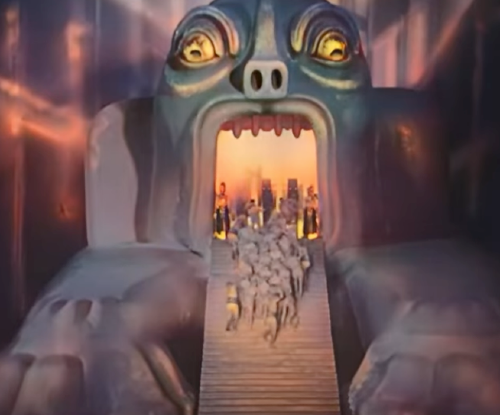About NDP
Thus there is a painful need in Canada for a real left party to take up real left issues. It needs to focus first on challenging the phony left. When the phony left is defeated and discredited, the right wing reactionary, so called ‘populist’, nonsense will disappear.

tear it down and put up something real
Last week’s post about the Canadian federal election suggests another post about the New Democratic Party. Some people are asking what purpose the NDP serves and if it has any future. There is really no answering that question without also answering what purpose Canada’s electoral system serves and if this has any future.
I have discussed the delusions of the electoral reformers, and their idea that proportional representation will fix the problems they perceive. They think the election result illustrated that problem. I asserted that the way minority governments in Canada have worked shows that PR will solve little.
I also pointed out that the NDP’s disaster in this election was only partly because of the ‘strategic voting’ effect. It does not matter what the NDP's policies are. Its vote goes down when the conservative vote goes up, because NDP supporters are afraid they will win.
I will examine another cause of the decline of the NDP vote. It is not being noticed much in most media silos. It is that much of the NDP vote did not go to the Liberals, but to the conservatives.
Still, it is very possible that the NDP will rebound strongly when and if support for conservatives collapses. However, even if it formed government, it would not deliver progressive policies. As shown by its behaviour when it governs provinces, that is not what it is for.
I will enlarge upon these themes. In the end I will discuss what really needs to change. Reforming the NDP or creating a ‘social democracy’ party will not actually fix anything, regardless of what some people think.
So to a little history of NDP and an explanation of its real purpose. As I wrote in the previous post, we live in an oligarchy, not a democracy. Political parties represent factions of the oligarchy, with different aims. A political party representing the public interest would not be tolerated by the oligarchy.
The NDP is a Fabian socialist project. Fabianism is a project of global financial capitalism, to control ‘left’ opposition from within. Financial capitalists run a global economic empire which is now in decline.
In Canada, the Liberal party is the main party of financial capitalism. It is considered the ‘natural governing party’ because it knows how to occupy the centre of the political spectrum. Everything else is made to seem ‘off centre’.
The purpose of the NDP has been to ‘corral’ and coopt left movements into electoral politics, thus neutralizing them. This process is sometimes called “Trasformismo”, after the system used in Italy to prevent a left opposition from forming. It has been very successful in Canada for this purpose.
The NDPs predecessor was the Cooperative Commonwealth Federation, (CCF) formed in 1921. It united some ‘social gospel’ movements which had formed on the prairies. That is, Christian groups, mostly Unitarian, who objected to capitalism but did not subscribe to Marxism.
Of course, such people were opposed to any violence or any way seeming ‘unreasonable’, so they never got very far in advocating for measures to actually help their Christian brethren. What measures favouring the interests of normal people were adopted in those times, were adopted because Liberal governments decided they were useful to elite interests. Or, because loud and disruptive people, often from labor unions or ad hoc social movements, made enough trouble about them.
By 1961, these kinds of groups were becoming effective. The CCF was being seen as ineffective. The Fabians worked to increase their effectiveness by creating an expanded political party, which included labor and social movements. It has had great success in limiting the effectiveness of these groups.
The party came to be called ‘New Democrat Party’ for what would now be seen as a most inglorious reason.
In the United States, the Democratic party was ‘rebranding’ itself. It wanted to be connected to the movement for social reform in that country at that time. Of course its real aim was to divert this movement, or limit the concessions made to it.
There was much talk of “the New Democrats” in the USA. This was noticed in Canada as well. At the refounding convention in 1961, the delegates decided they wanted to be associated with the New Democrats of the USA.
The ‘New Democrats’ of the USA was only a temporary gimmick. The New Democrat party of Canada has got very old without ever offering anything new. It keeps taking credit for things it really had little to do with.
For example, they try to create the impression that Tommy Douglas and the CCF in Saskatchewan, and later the NDP federally, created medicare. All the Saskatchewan CCF ever created was a hospital insurance plan. This preempted an attempt to creating a community hospitals plan which would have been much superior.
We got medicare, and some other progressive programs in Canada, during the period of Diefenbaker ‘red toryism’ in the sixties. Dief the Chief and Lester Pearson decided together that some social dispensations were necessary to preempt radicalization of the population. Later, Pierre Trudeau gave us the Canada health act, spelling out how provinces must run medicare.
Medicare has always been intensely resisted by the provinces. No further progress in medicare was possible after Trudeau senior. The most obvious step would have been to have the federal government take over health care.
The NDP was never really anywhere in this. Recently, it got us a very limited Pharmacare and dental care program. This in exchange for being handcuffed while the federal Liberals let provincial conservative governments privatize health care.
The high point of the NDP was in 1988. The public was disillusioned with the older parties. They were especially concerned about Mulroney’s attempt to promote free trade with the USA.
In the free trade election of 1988, the NDP could have won a majority government. I worked on an NDP campaign at the time. Then Ed Broadbent, NDP leader at the time, bizarrely refused to speak against Mulroney’s free trade proposal.
He did not endorse free trade, he just refused to speak out against it, which was probably worse. The Liberal Leader, John Turner, became the figurehead for opposition to free trade. NDP support collapsed like a rock.
When journalists forced Broadbent to answer about why he was not talking about free trade, he stammered that there were more important issues to talk about. Many of us walked out of the NDP campaign and tried to put together an anti free trade campaign on short notice, but with little success.
Years later, when asked about this, Broadbent admitted that he refused to speak against free trade under pressure from the Auto workers union. These people had the idea that a free trade deal would help them keep control over the Canadian branch of their US based union. Soon after free trade, the Canadian Auto Workers broke away from the American union.
The NDP finished the 1988 election in their usual third place position, when they had started out leading the polls. As the 1988 betrayal sunk in to its supporters, it declined further. It got nine seats in 1993.
NDP support rose during the Harper years. This was due to the internal problems of the Liberals, and the agreeable personality of Jack Layton. It was the official opposition for awhile.
Since then, NDP support has slowly declined. People attach themselves to it as the ‘progressive alternative’ and gradually become disillusioned over time. It cannot achieve stable relations with Labor or social organizations because it will not commit to a consistent program.
Provincial NDP has been similarly hard to work with. In some western provinces, it has taken the place of the Liberal party, because Liberals are so discredited there. There, it simply acts like a liberal party, occupying the middle ground.
In eastern Canada, most provinces have given the NDP a try. None have ever given them a second mandate. The problem is always a flat inability to govern, and the betrayal of its supporters.
Federally, and east of Manitoba, NDP is shown to be a hollow shell; a mere election machine. When called on to govern, it cannot even put together a Cabinet staff. It has no guiding principle, even of mere ‘power for power’s sake’.
As to the future of the NDP, it will not entirely go away as long as it fills the big vacuum where something better should be. It serves a purpose for the financial globalists of Canada. It is likely that if either of the main parties suffers a collapse of support, it will expand to fill the vacuum.
The big question is, could an alternative to the NDP be developed. I am not aware of this being seriously tried. I have seen some attempts to reform the NDP.
The NDP is structured so as to be immune to reform. It works on the inclusive principle, or ‘bad drives out good’. Any bunch of flakes can go to a convention, propose some ridiculous resolution, and be likely to get it passed and force the party candidates to defend it.
An example of this is the harassment of the Ontario provincial campaign of 2018 by “open border” lunatics. Andrea Horwath was bullied by people within the party to acknowledge support for one of these ridiculous policy statements. This was, that the Canadian border should be wide open to anyone who wants to come here.
Obviously, this was poison to most of NDP's key constituencies; the ones who could deliver votes and resources. Some labor activists I talked with credit this as costing NDP the election.
I have been around long enough to see a couple of attempts to reform the NDP. There was the “waffle group” in the seventies, and the “New Politics Initiative” in the early two thousands. In both cases, it seemed that these people’s problem was they thought they were not being listened to. In fact, they just did not have anything useful to say.
I have met many people who resent NDP for having sabotaged useful initiatives. The NDP is not much good at anything else. It is very good at shutting down anything which might threaten its control of all things ‘left’.
This is sometimes called the “This is where the tracks are laid” mentality. We have laid down the tracks, we decide who can run a train on it. This is the biggest reason to destroy the NDP, beyond its distortion of electoral politics.
Of course, if Canada is going to get out of its present nonviable situation, some new tracks will have to be laid down on the left side of things. They have to actually go where people need to go. People have to stay on them.
The NDP is not reformable. A new party must be built. Some new tracks must be laid. It is very important that NDP’s tracks be torn up.
Some people want a more explicitly ‘social democratic’ party. That is another beautiful idea from the last century. Governments will regulate corporations, tax them, and fund a ‘welfare state’ of high quality social programs.
That era did not last long. As soon as the capitalist classes decided the threat of communist had declined, they began working to roll back the welfare state. This was never well developed in Canada, to begin with.
We do not need the old welfare state back again. Better ideas are available now. What we need is the capitalist system dismantled.
In order to dismantle capitalism successfully, we need a plan for running a socialist economy. Practical models for that are now available. Most people will find them acceptable.
However, capitalism must be removed first. A government system must be set up which can apply a socialist system. This requires a socialist party to gain power and keep power.
What most people still do not find acceptable is what will have to be done to remove capitalism and securely install socialism. In other words words, they want the benefits of a post capitalist world, without the violence and disruptions which will be required to bring it about. As one wise old man put it, they want crops without plowing the soil.
Often people get into a false debate about removing capitalism through electoral processes or through revolution. Neither will be successful without the other. This is shown by successful revolutions in recent times, such as in Venezuela, Bolivia, and Nicaragua.
No socialist political party will take power without some sort of force behind it. It will not be allowed to run, or it will not be allowed to govern. If such a party takes power by force, without elections, it will still, at some point, have to prove the support of the population by a credible election.
As well, a modern revolution against capitalism will not be a matter of storming the halls of government. It will be a more gradual process of taking control of institutions. This process is a much too complicated topic for this post.
Also for complicated reasons, this will not happen soon in Canada. It will happen eventually. Canada will by then have plenty of examples from other countries of how to go about it.
However, now is a good time to start building a serious socialist movement and party. The fossilized Marxist parties will be of no use. The NDP will be a serious problem which needs to be got out of the way.
Even if a real socialist party outpolls the NDP, it cannot split votes with it. The NDP cadres must have it explained to them that they are not doing any good, and need to shut down. A real socialist party must work on building a solid social movement behind itself, and gain solid support from labor, by offering in return solid support and protection.
There are two final points to be made about the NDP and a post NDP party. One is about voting reform. The other is about defining what is actually a ‘left’ issue.
Much of the left in Canada, or people who think of themselves as left, have been convinced by the beautiful dreamers of Fair Vote Canada that voting by proportional representation will remove all their sorrows. Alas, the way minority parliaments have worked in Canada is a good indicator of how PR would work in Canada.
It will also work in much the same way as in many developed countries with PR. The establishment party or parties will still occupy the centre. The smaller parties, left and right, will be either ignored, or gamed into going along with policies which are against their principles.
A PR structure will make even more unlikely any serious reform within the existing system. Neither a socialist party nor a reactionary right wing group could gain a majority. If the existing system collapses, necessary reform will not be possible except by forcible removal of the government.
In a PR system in Canada, the NDP will be assured of a few more seats, and safety from being wiped out. This will please the party establishment. However, the NDP will have little power and its rot will continue longer.
There is something important which NDP and other ‘left’ and progressive commentators do not want to talk about or even acknowledge. In recent years, there has been a tendency for some NDP support to migrate, not back and forth with the liberals, but with conservatives. This effect was especially strong in this election. It is a big reason why the Liberals did not get a majority.
This is not hard to understand if you also understand another strange feature of modern politics in the Atlantic world. That is, issues which should be left issues being distorted and turned into right wing issues. The left seems to simply abandon some ‘real people’ issues, and the right picks them up.
Behind this is the social demolition campaign of the phony left. That is, creation of divisive issues, intended to insult ordinary people, and to further economic and social breakdown. Further behind it is financial capitalism and its many front organizations.
The sign of the real left is that it takes on all these phony issues, puts them right side up, and defends the public, the normal people. The phony left adopts these issues, which are all very antisocial.
The real left is almost stamped out in most Atlantisphere countries. In Canada, they are driven out of the NDP and most social organizations. Thus it is not surprising that much of the NDP's constituency is going over to the conservatives.
This is tragic. The conservatives make some pretense of dealing with these issues. Yet it is also wrapped up with the other aspects of the reactionary agenda; the destruction of the welfare state and all benefits to ordinary people.
Thus there is a painful need in Canada for a real left party to take up real left issues. It needs to focus first on challenging the phony left. When the phony left is defeated and discredited, the right wing reactionary, so called ‘populist’, nonsense will disappear.
I am puzzled that anyone needs a detailed explanation of what the real left and phony left issues are, but it would be a subject for another blog post.




Comments ()